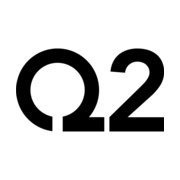
Vestas Wind Systems A/S
CSE:VWS


| US |

|
Johnson & Johnson
NYSE:JNJ
|
Pharmaceuticals
|
| US |

|
Berkshire Hathaway Inc
NYSE:BRK.A
|
Financial Services
|
| US |

|
Bank of America Corp
NYSE:BAC
|
Banking
|
| US |

|
Mastercard Inc
NYSE:MA
|
Technology
|
| US |

|
UnitedHealth Group Inc
NYSE:UNH
|
Health Care
|
| US |

|
Exxon Mobil Corp
NYSE:XOM
|
Energy
|
| US |

|
Pfizer Inc
NYSE:PFE
|
Pharmaceuticals
|
| US |

|
Palantir Technologies Inc
NYSE:PLTR
|
Technology
|
| US |

|
Nike Inc
NYSE:NKE
|
Textiles, Apparel & Luxury Goods
|
| US |

|
Visa Inc
NYSE:V
|
Technology
|
| CN |

|
Alibaba Group Holding Ltd
NYSE:BABA
|
Retail
|
| US |

|
JPMorgan Chase & Co
NYSE:JPM
|
Banking
|
| US |

|
Coca-Cola Co
NYSE:KO
|
Beverages
|
| US |

|
Walmart Inc
NYSE:WMT
|
Retail
|
| US |

|
Verizon Communications Inc
NYSE:VZ
|
Telecommunication
|
| US |

|
Chevron Corp
NYSE:CVX
|
Energy
|
Utilize notes to systematically review your investment decisions. By reflecting on past outcomes, you can discern effective strategies and identify those that underperformed. This continuous feedback loop enables you to adapt and refine your approach, optimizing for future success.
Each note serves as a learning point, offering insights into your decision-making processes. Over time, you'll accumulate a personalized database of knowledge, enhancing your ability to make informed decisions quickly and effectively.
With a comprehensive record of your investment history at your fingertips, you can compare current opportunities against past experiences. This not only bolsters your confidence but also ensures that each decision is grounded in a well-documented rationale.
Do you really want to delete this note?
This action cannot be undone.

| 52 Week Range |
82.88
173.05
|
| Price Target |
|
We'll email you a reminder when the closing price reaches DKK.
Choose the stock you wish to monitor with a price alert.

|
Johnson & Johnson
NYSE:JNJ
|
US |

|
Berkshire Hathaway Inc
NYSE:BRK.A
|
US |

|
Bank of America Corp
NYSE:BAC
|
US |

|
Mastercard Inc
NYSE:MA
|
US |

|
UnitedHealth Group Inc
NYSE:UNH
|
US |

|
Exxon Mobil Corp
NYSE:XOM
|
US |

|
Pfizer Inc
NYSE:PFE
|
US |

|
Palantir Technologies Inc
NYSE:PLTR
|
US |

|
Nike Inc
NYSE:NKE
|
US |

|
Visa Inc
NYSE:V
|
US |

|
Alibaba Group Holding Ltd
NYSE:BABA
|
CN |

|
JPMorgan Chase & Co
NYSE:JPM
|
US |

|
Coca-Cola Co
NYSE:KO
|
US |

|
Walmart Inc
NYSE:WMT
|
US |

|
Verizon Communications Inc
NYSE:VZ
|
US |

|
Chevron Corp
NYSE:CVX
|
US |
This alert will be permanently deleted.
Vestas Wind Systems A/S
In the sweeping landscapes of Northern Europe, Vestas Wind Systems A/S harnesses the power of the wind, emerging as a pioneer in renewable energy. Founded in 1945 in Denmark, Vestas transitioned from mundane agricultural equipment into the dynamic realm of wind energy solutions. Over the decades, the company has established itself as a world leader in both the manufacturing and servicing of wind turbines. Vestas capitalizes on the surging global demand for sustainable energy by offering a range of products tailored to fit diverse geographical and climatic conditions. Their expertise lies not just in the production of the towering, sleek turbines but extends beyond to strategic siting, installation, and operational optimization. The company's innovation pipeline is impressive, often unveiling upgrades that maximize energy efficiency and reduce the levelized cost of energy.
Revenue is primarily generated through the sale of wind turbines, but equally significant is its service division, which ensures long-term partnership with its clients through comprehensive maintenance and optimization services. This dual-income stream model not only provides stability but also facilitates strong, recurring cash flows. Vestas' approach focuses on lifecycle management, offering extensive post-sale service agreements that entice customers with the promise of maximized energy yield and minimized operational downtime. As countries and companies around the globe increasingly pivot toward carbon neutrality, Vestas thrives in catering to these needs, making strides in wind technology and securing itself as a cornerstone of the ongoing green transition. The company's operations are a quintessential blend of advanced engineering prowess and a commitment to environmental sustainability, driving its growth and solidifying its status as a major player in the wind energy sector.

In the sweeping landscapes of Northern Europe, Vestas Wind Systems A/S harnesses the power of the wind, emerging as a pioneer in renewable energy. Founded in 1945 in Denmark, Vestas transitioned from mundane agricultural equipment into the dynamic realm of wind energy solutions. Over the decades, the company has established itself as a world leader in both the manufacturing and servicing of wind turbines. Vestas capitalizes on the surging global demand for sustainable energy by offering a range of products tailored to fit diverse geographical and climatic conditions. Their expertise lies not just in the production of the towering, sleek turbines but extends beyond to strategic siting, installation, and operational optimization. The company's innovation pipeline is impressive, often unveiling upgrades that maximize energy efficiency and reduce the levelized cost of energy.
Revenue is primarily generated through the sale of wind turbines, but equally significant is its service division, which ensures long-term partnership with its clients through comprehensive maintenance and optimization services. This dual-income stream model not only provides stability but also facilitates strong, recurring cash flows. Vestas' approach focuses on lifecycle management, offering extensive post-sale service agreements that entice customers with the promise of maximized energy yield and minimized operational downtime. As countries and companies around the globe increasingly pivot toward carbon neutrality, Vestas thrives in catering to these needs, making strides in wind technology and securing itself as a cornerstone of the ongoing green transition. The company's operations are a quintessential blend of advanced engineering prowess and a commitment to environmental sustainability, driving its growth and solidifying its status as a major player in the wind energy sector.
Revenue Growth: Vestas reported Q3 revenue of EUR 5.3 billion, up 3% year-on-year, driven by higher deliveries despite negative currency effects.
Strong Profitability: EBIT margin improved to 7.8%, supported by better onshore project execution and lower warranty costs.
Record Gross Profit: Achieved highest-ever third-quarter gross profit at EUR 772 million, reflecting improved operational performance.
Order Momentum: Order intake reached 4.6 GW, up 4% YoY, with strong contributions from the US and Germany; order backlog increased to EUR 31.6 billion.
Service Headwinds: Service EBIT guidance was revised down to EUR 625 million due to currency impacts and specific offshore site costs, despite a growing service backlog.
Share Buyback: A EUR 150 million share buyback program was announced, citing strong cash flows and a solid net cash position.
Outlook Narrowed: 2025 revenue and margin outlook were narrowed, with revenue guided to EUR 18.5–19.5 billion and EBIT margin to 5–6%.
Offshore Ramp-up: Offshore and onshore manufacturing ramp-up continues, with dilution effects expected to lessen in 2026.





















































